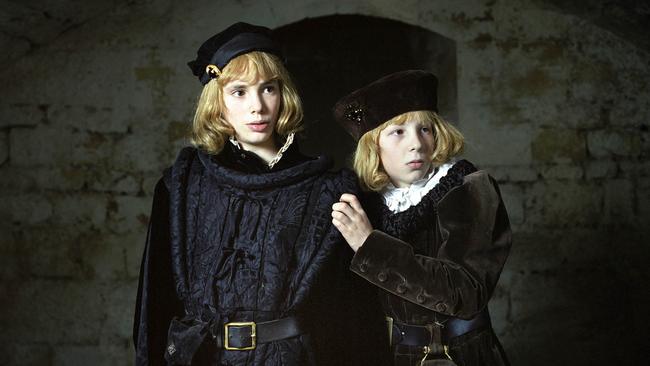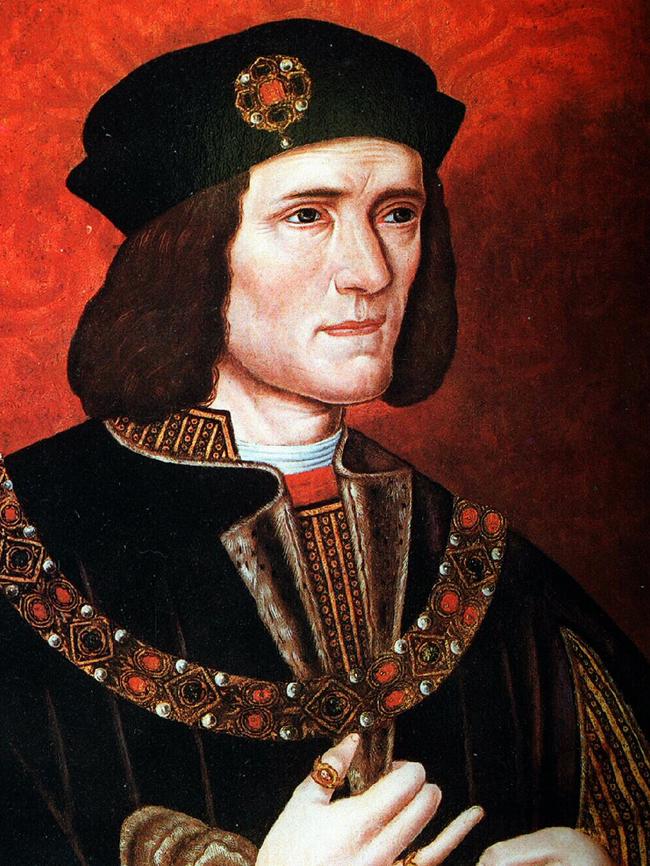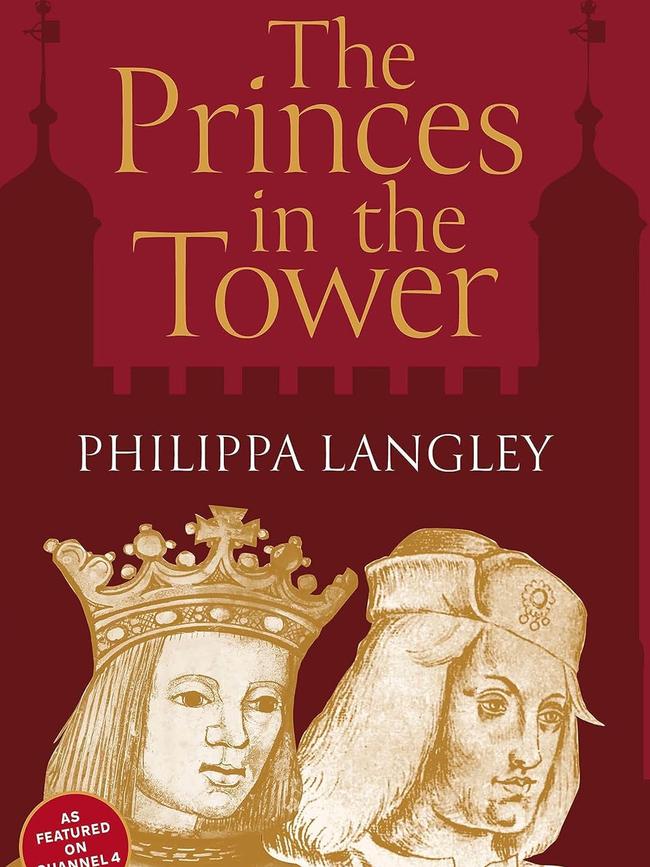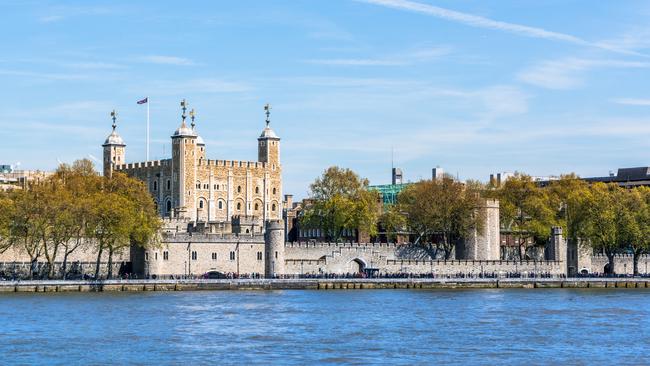‘The Princes in the Tower’ Review: A Royally Cold Case
Richard III has long been blamed for the presumed murder of his nephews, whose skeletons were found in a box under a staircase by workmen in the Tower of London in 1674. But some believe the royal children escaped.

In 1674, workmen at the Tower of London discovered two small skeletons in a box under a staircase. These, it seemed, were the bones of the legendary “Princes in the Tower”, Edward V and his brother Richard, Duke of York, last seen in 1483. After their father, Edward IV, died in April 1483, the princes, then aged 12 and 9, respectively, came to London, where Edward V was to be crowned. Their uncle Richard, Duke of Gloucester, accompanied them. But the coronation was delayed. The princes, declared illegitimate by an act of parliament in mid-June, disappeared into the tower, care of Uncle Richard. In late June 1483, he became Richard III.
The Wars of the Roses – the civil war for the English throne between the houses of York and Lancaster – had raged for nearly three decades. In 1485, Richard III was killed at the Battle of Bosworth Field. The House of York lost its throne to a Welsh upstart, Henry Tudor.
Later historians would record how, as Henry VII, he rebuilt the state and rebuffed the uprisings of Lambert Simnel and Perkin Warbeck, two pretenders who claimed to be the grown-up princes of the tower.

For centuries, everyone knew Richard III as an evil, limping hunchback, a portrayal Shakespeare embellished in “Richard III”. The consensus among academic historians resembled that of the mob that was said to have disinterred Richard, in a moment of Reformation exuberance, and thrown his bones into a river.
In 2012, the Looking for Richard Project, led by the British writer Philippa Langley, found Richard III’s bones under a municipal parking lot in the city of Leicester. DNA testing confirmed that the bones were his. Forensic analysis showed that, though Richard had scoliosis, he was no hunchback. Nor did he limp, or have a withered arm, as Thomas More had claimed in a work of unsaintly Tudor propaganda. Richard III, the first long-dead person of known identity to have his entire genome sequenced, was not who we thought he was. What about the princes?
Langley’s book, The Princes in the Tower, derives its title from her next collective venture, the Missing Princes Project. More than 300 volunteers, including paleographers, police officers, forensic anthropologists, multilingual researchers and even academic historians have reopened the coldest of cold cases. Pursuing, Langley writes, some “111 lines of enquiry”, they turned up a mass of new evidence and possibilities.

Langley has skilfully turned their crowdsourced findings into a new narrative, in which the princes escaped the tower and attempted to recover their throne from Henry VII. The Princes in the Tower is a gripping and ingenious work of historical detection. What’s more, Langley and Co may be right.
The missing princes had last been seen practising with bows and arrows in the tower gardens in summer 1483, shortly after Uncle Richard secured the act of parliament declaring them and their sister, Elizabeth of York, to be illegitimate. A visiting Italian monk, Domenico Mancini, noted their disappearance soon afterwards into the tower’s “inward apartments”. In January 1484, the French government declared that Richard III had murdered them. Gossip, mostly foreign, proliferated the means: “killed with herbs” in 1486, “forced bleeding” in 1496; starvation and asphyxiation under a bed quilt in 1500; “dispatched with the sword” or drowned in a butt of Malmsey in the early 1500s.
The Tudor regime was keen to discredit Richard III and the Yorkists, but it did not get its story straight until the reign of Henry VIII. Even More, whose account was published in 1543, allowed that “some remain in doubt” as to whether the princes were “destroyed or no” during Richard III’s reign. The death of the young Edward V, Langley finds, appears in no governmental or county records. No church records include “prayers or observances for his soul’’. Nor did Henry VII attempt to legitimise his rule by conducting an inquiry into the princes’ fates or by making “any official recording or statement”.
Henry VII did, however, marry the princes’ elder sister, Elizabeth of York. That meant parliament needed to reverse the act asserting that she and her brothers were illegitimate, as it did in 1485. If the princes were still alive, this might have caused headaches for Henry VII, since it would have automatically reinstated the boys as Edward IV’s legitimate heirs – thereby undermining the Tudor claim. As the explorer Clements Markham argued in 1906 (and as Josephine Tey’s 1951 novel, The Daughter of Time, explored), Henry VII would have had as good a motive for killing the princes in 1485 as Richard III had for killing them in 1483.

The first half of The Princes in the Tower convincingly demolishes the traditional version of events about the princes’ murders: Whatever happened to them, no contemporaneous proof confirms the Tudor account. The second half revises the Tudor version of what happened next: Langley’s scenario begins with the princes escaping the tower and fleeing to Europe.
The Tudors had attributed two attempted Yorkist restorations, in 1487 and 1495, to the impostors Simnel and Warbeck. British historians still deride these familiar characters as opportunistic commoners; Langley, using newly discovered documents from French and Dutch archives, argues that the two efforts were led, separately, by the princes of the tower.
In May 1487, the princes’ aunt Margaret of York, dowager duchess of Burgundy, sent a fleet from Holland to Ireland carrying German mercenaries and a young man claiming to be Edward V. Crowned by the Yorkist nobility at Dublin’s Christ Church Cathedral, he then invaded England, where he was defeated in battle at Stoke by Henry VII’s army. He may have died there; he may, as a revolt of Irish allies in 1488 suggests, have escaped and lived another four years in exile.
Henry VII claimed to have captured the leader of the invasion. The pretender, Henry asserted, was not Edward V but Lambert Simnel, a joiner, tailor, baker or shoemaker’s son. Langley, however, theorises that Simnel didn’t lead the invasion and was just a patsy. As proof, she offers a receipt from a French archive for weaponry sold by a French merchant to Margaret’s son-in-law, Maximilian, king of Burgundy. Dated June 1487, the receipt says that the weapons (pikes) were for Margaret of York’s “nephew, son of King Edward”. This, Langley believes, proves that the real Edward V escaped from the tower and attempted a Yorkist restoration.
So, she argues, did his brother Richard. In a four-page document discovered in Dutch archives in 2020, Richard, or someone claiming to be him, avers that the duke of Norfolk smuggled him and his brother out of the tower in 1483 and across the North Sea to Burgundian territory. A Dutch chronicle, written around 1500, records how “Richard, the son of King Edward” gathered his forces in Haarlem before landing in Kent in 1495. Further Dutch accounts corroborate the chronicle’s description of Richard’s movements through the Low Countries.
The second Yorkist restoration attempt floundered immediately. Henry VII purged the Yorkist nobility and denounced the pretender as “Piers Osbeck” or Perkin Warbeck, a French boatman’s son. Captured, he was so badly beaten that his face was “disfigured beyond recognition”. In 1499, this Perkin Warbeck was hanged for treason. “It was never explained,” Langley writes, how a boatman’s son from a city in the north of France “might be executed for treason against a foreign (English) monarch”.
Langley and her team have cast new light into a murky period, and with a methodological brilliance that eludes most academic historians. Their account raises all sorts of questions. If Richard III, or even Henry VII, killed the princes in the tower, why weren’t their bones thrown into a waste pit or the Thames? Why preserve the evidence of regicide in a box? If Edward V escaped from the tower and survived the failed 1487 invasion, when and how did he die? If Warbeck was really Richard of York, why did Henry wait four years to execute him?
The bones found in a box in the tower in 1674 were reinterred in an urn in Westminster Abbey. In 2018, analysis of an X-ray scan suggested that one skeleton was female. A reassessment in 2021 then concluded that it was impossible to tell. The obvious next step, DNA testing, ultimately requires Charles III’s permission.
If the bones in the box are unrelated to the skeleton of Richard III that Langley found in that parking lot, then this book will have refounded the story of how the Middle Ages ended in England.
The Princes in the Tower: solving history’s greatest cold case
The Wall Street Journal

To join the conversation, please log in. Don't have an account? Register
Join the conversation, you are commenting as Logout